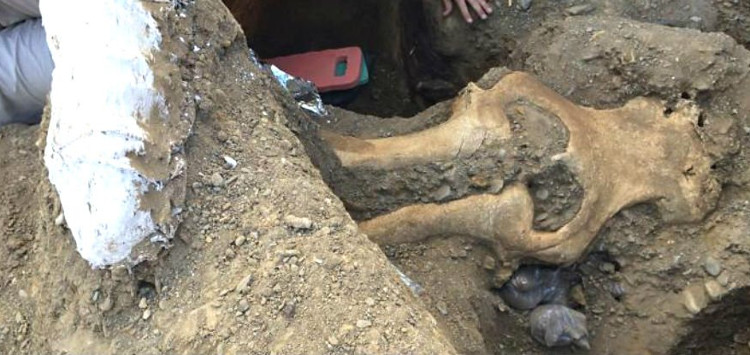13,000-year-old mammoth skull in the United States
Different 13,000-year-old mammoth fossil skulls found in the Channel Islands, the United States appear to hypothesize a new species.
A research team found rare mammoth skull fossils in Channel Islands National Park, off the coast of Southern California, USA, Nature World News reported on Sept. 19.
Based on a piece of coal next to the specimen, scientists speculate that the skull dates back to about 13,000 years, the same age as the Arlington man bone, the oldest human skeleton found in North America.

New 13,000-year-old mammoth skulls are found in Channel Islands National Park.(Photo: National Parks Service).
"This is one of the most intact mammoth skulls I have ever seen. This discovery is rare and has great scientific significance. It shows that mammoths appear on Channel Island almost at the same time as their " , Justin Wilkin, paleontologist at The Mammoth Site Museum, USA, said.
What caught the attention of scientists was that the skull was smaller than the mammoth skull of Columbia, but much larger than the dwarf mammoth skull. Therefore, there is a theory that this is the skull of the transitional individual between the two species.
Columbia mammoths have an average height of about 4.2m, migrating to Channel Island in the past two ice ages, when sea levels were low. After living on the island, they evolved into a smaller, 1.8-meter tall species and called the dwarf mammoth.
According to research by scientists, the process of shrinking the size of mammoth mammoths into a dwarf mammoth is only a matter of a few thousand years. Because the time interval between two species is quite short, Dan Muhs , geologist of the United States Geological Survey (USGS), says the new skull is unlikely to be a new transitional individual. Instead, he suggested that there were at least two migrations of Columbia mammoths to Channel Island.
"The first migration may occur in the glacier period, about 150,000 years ago. The second migration occurred in the last ice age, about 10,000-30,000 years ago," Dan Muhs said.
Under the plan, the mammoth skull along with other parts will be transferred to the Santa Barbara Museum of Natural History. Here, they will be cleaned, preserved, researched and prepared for public display.
- 42,000 year old mammoth exhibition
- The 700,000-year fossil suspected to be 'precious' mammoth
- Display of mammoth corpses intact
- Mammoth exhibition 39,000 years ago
- Fossil three million year old mammoth teeth on the English coast
- Study mammoth brain
- Netherlands: Successfully implanted 3D skull for a woman
- 15,000-year-old mammoth trap discovered in Mexico
- Detecting curly feather mammoths in soybean fields
- Display of 39,000-year-old mammoth corpses
- Found the dinosaur skull dating to 65 million years in the United States
- Romania: A 33,000-year-old skull cracked revealing a scary story
 Discovered an ancient centipede fossil 99 million years old
Discovered an ancient centipede fossil 99 million years old Discovered bat-like dinosaurs in China
Discovered bat-like dinosaurs in China Discovered a 200-year-old bronze cannon of the coast
Discovered a 200-year-old bronze cannon of the coast Discover 305 million-year-old spider fossils
Discover 305 million-year-old spider fossils